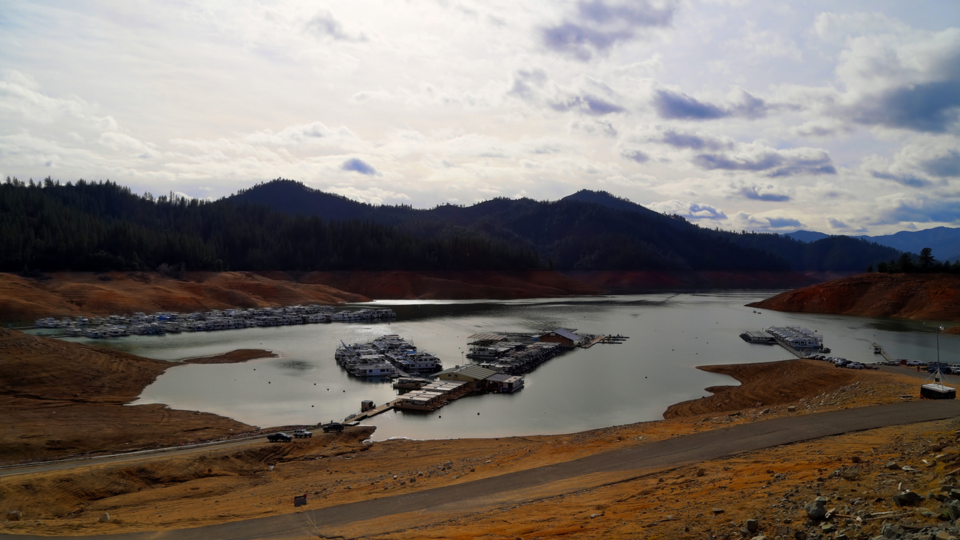Science News
A Flood of Drought News
As the drought here in California goes from bad to worse with little rain and snowfall this winter, coverage of our drought and others, plus water conservation efforts globally, have been at the forefront of many news outlets. Today, we’ll provide a round-up of that coverage to get you up to speed.
Climate Change to Blame?
A study published last month in the Proceedings of the National Academy of Sciences determined that even though climate change isn’t directly related to the lower precipitation that our state has been experiencing, warmer temperatures caused by global warming have exacerbated the situation.
A team of scientists led by Stanford’s Noah Diffenbaugh found that the worst droughts in California have historically occurred when conditions were both dry and warm, and that global warming is increasing the probability that dry and warm years will coincide. Climate models (both with and without anthropogenic forcing) suggest that California is entering an era when nearly every year that has low precipitation also has high temperatures—temperatures similar to or higher than 2013-14, which had the highest statewide average annual temperature on record. More information on the study is here.
And on a related note, you can find an interactive map of California’s changing temperatures in the Executive Summary of a report called From Boom to Bust? Climate Risk in the Golden State from the Risky Business Project. The interactive allows you to compare “business as usual” anthropogenic effects to less likely, more severe scenarios.
Megadroughts
In February, another study, this time in Science Advances, forecast more “megadroughts” in the future for the U.S. Southwest and Central Plains, also due to climate change. A megadrought is a drought lasting more than three decades. Using historical data and climate models, scientists determined that in the second half of this century, conditions could be drier and longer than drought conditions seen in those regions in the last 1,000 years. To understand more about how the team came to these conclusions, visit KQED’s post about the study.
Restrictions in California
California governor Jerry Brown’s announcement of water-use restrictions in the state last week was very well-timed with the news that the Sierras had the lowest snowpack recorded in history. Since the snowpack provides about 30 percent of the water Californians depend on for drinking, growing food, and other uses, the time to cut back is now (if not a year ago or more).
Governor Brown’s executive order will “impose a 25 percent reduction on the state’s 400 local water supply agencies, which serve 90 percent of California residents, over the coming year,” according to the New York Times. These cutbacks affect residents, cemeteries, golf courses, public lands, and more—but not farms, which use 80% of the water in our state. National Geographic reports that, “Instead, farms are being asked to improve their reporting of water use, so regulators can help reduce waste.” Wired does an excellent job of breaking down the numbers and summarizing how Brown is planning to get there: “by reducing water waste, implementing stricter waste enforcement, streamlining the bureaucratic processes for water management, and developing new technologies to reduce both usage and waste.”
Droughts Elsewhere
As Tom Yulsman put in his blog for Discover last month, “California’s plight is part of a much bigger picture.” The U.S. Southwest is also facing very dry conditions. His blog features satellite images and graphics depicting the low lake levels in Lake Powell and Lake Mead, both of which provide water to many of the residents in the area. Another real-time graphic of Lake Powell dramatically demonstrates how much the levels have fallen just since last November. Additionally, a study in Nature Geoscience last week spells out bad news for Southwestern aspen forests by the mid-twenty-first century from increased drought stress due to climate change.
Two weeks ago, Science published two articles about the drought in Brazil, its worst since 1930. “The water crisis has spread across large areas of the country’s breadbasket region—southeast Brazil—affecting crop production, industrial activities, and millions of people,” write Alison G. Nazareno and William F. Laurance. The country holds the world’s largest freshwater supply, and the scientists wonder if deforestation is behind the water shortage. A related article argues that water diversion techniques to support people in São Paulo could harm biodiversity.
A drought in Kenya in 2008 and 2009 allowed researchers the opportunity to study how drought affects wildlife. “We lost 98 percent of the wildebeest population, 75 percent of the zebra population and 30 percent of the elephant population,” says Susan Alberts, from Duke University. “It was impossible to go anywhere without smelling death.” Focusing specifically on baboons, Alberts and her team found that during the 2009 drought, female baboons born during low rainfall years were 60 percent less likely to become pregnant, whereas pregnancy rates dipped by only 10 percent for females born during normal rainfall years. “The data suggest that early adversity carries lifelong costs,” says Jenny Tung, also at Duke. Their study is soon to be published in the journal American Naturalist.
Water Solutions
The New York Times posted suggestions from Californians last week on how to conserve water—from shorter and fewer showers, to car washing techniques. Maybe you’ll learn something new. (Also, the Times has a great infographic that features how much water Californians use by location.)
With climate change and world population growth, our global freshwater supply could become much more scarce. Stanford researchers are developing a range of promising solutions to freshwater challenges—from drinking water to sanitation to agriculture. Their Water Solutions website offers tips, costs, and reports to help plan for water availability and stability for humans and wildlife well into the future. Go check it out.
Images: Lake Shasta, torroid/Flickr; New Melones Lake, Northwest Rafting Company/Flickr; Uvas Reservoir, Don DeBold/Flickr; Dying Aspen trees, W. Anderegg; Lake Powell, 1999, NASA Earth Observatory; Lake Powell, 2014, NASA Earth Observatory





